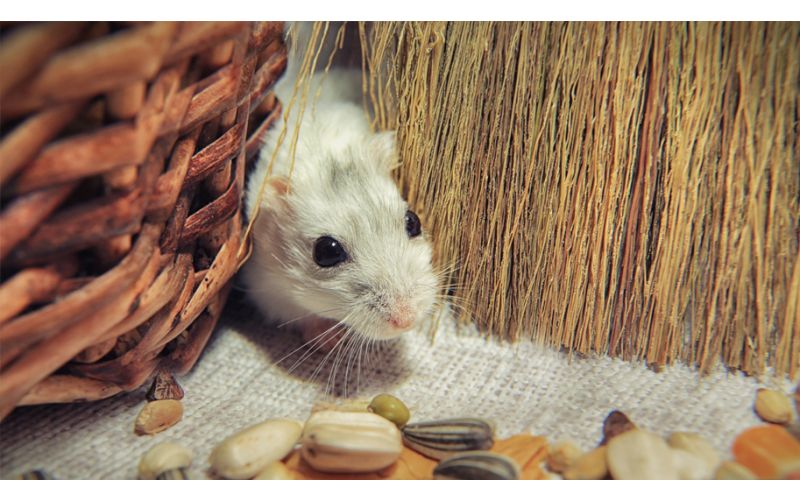
How to Keep Rodents out of Your House and Barn in Winter
|
|
Time to read 6 min
 You are being redirected to QC Supply Pharmacy, where you’ll find a wide selection of high-quality prescription and pharmaceutical products for animals of all sizes.
Enjoy the same great service and expertise you trust from QC Supply.
Click below to continue shopping.
Continue
No thanks, stay on the main site
Powered by
You are being redirected to QC Supply Pharmacy, where you’ll find a wide selection of high-quality prescription and pharmaceutical products for animals of all sizes.
Enjoy the same great service and expertise you trust from QC Supply.
Click below to continue shopping.
Continue
No thanks, stay on the main site
Powered by


|
|
Time to read 6 min
“Help! A family of mice has moved into one of my kitchen drawers for the holidays. What to do to evict them?” - Recent post on a neighborhood online forum
If you live out in the country, you know that frigid weather sends mice (and rats!) indoors where they don’t belong. For veterans of rodent wars, a mice invasion confined to a kitchen drawer sounds eminently manageable compared to some of the other possibilities. Mice and rats not only can transmit disease, they can damage the contents of your home or barn—and the structures themselves—with their destructive chewing. And, of course, they are creepy the way they scurry around searching out and stealing food, leaving a disgusting mess in their wake. You need to get rid of them. Or better yet, prevent mice and rats from entering your house or barn in the first place.
Mice are more commonly found in homes than rats, but both are found in barns and other outbuildings—attracted by stores of animal feed. Old barns are particularly vulnerable because they’re likely to have gaps in their structures that allow for easy ingress by rodents and other four-legged pests. And, it doesn’t take much: mice can squeeze through a ¼-inch opening; rats only need ½-inch. If the opening isn’t quite big enough, they will readily enlarge it with their sharp teeth.
To formulate a plan for rodent control, it’s helpful to understand the differences in behavior and habits between mice and rats. In general, rats tend to be cautious/risk averse in contrast to mice which tend to be curious and more likely to check out new things, including traps. This means you need to take more care when setting traps and bait stations for rats than for mice.
By the way, mice are afraid of rats—and can smell their presence. So the good news is (if you’re a glass-half-full kind of person) if you have a problem with rats, mice are unlikely to pile on.
Mice and rats invade homes and other structures—including vehicles—in order to find food and shelter, and to build a nest for breeding. Contrary to what some people believe, the presence of rodents is not related to poor sanitation or lack of cleanliness. Rodents are most likely to make their illegal entry when it’s cold outside and their normal food sources are in short supply. They are attracted to indoor supplies of livestock grain, pet food, and bird food, as well as, of course, human food. And, yes, they will be attracted to any unsecured garbage containing foodstuffs.
It takes mice about four weeks to reach sexual maturity. Females can become pregnant every month, each producing up to 40 babies per year. As for rats, depending on the species, they can reach sexual maturity in about five weeks and each female produces on average five litters a year consisting of 7-14 offspring. Clearly, given their uber-efficient reproductive cycle, rodents can quickly take over and become more than just a nuisance in a relatively short period of time if you’re not vigilant about deterring them.
Usually, droppings are the first sign of rodent entry, but you also may see evidence of their gnawing or food pilfering. If you have a large infestation, you might get a whiff of musky rodent urine. If you look closely in dark, out-of-the-way places in your basement or attic, you will probably find disturbed insulation and possibly oily rub marks where they travel along walls. Many people are unpleasantly surprised to discover the presence of rodents only when an electrical appliance fails because they’ve chewed through the cord!
Speaking of electrical cords and wires, rodents often chew on them to satisfy their need to wear down their teeth, which are constantly growing. This behavior can not only cause serious damage, it’s also potentially dangerous because it can start fires.
Mice and rats can also damage insulation, ductwork, and can cause structural damage with their gnawing. Their self-enlarged entry points can allow moisture to get in, resulting in mold and other water damage. And, of course, they can decimate your food supply if they gain access to your food drawers or pantry. Most everyone can relate to the annoyance of finding a freshly gnawed hole in your loaf of bread as you try to make toast in the morning.
Rodents can also transmit dangerous diseases such as Hantavirus, Salmonellosis, Leptospirosis, Rat Bite Fever, to name a few. Rodents also serve as vectors for common, dreaded parasites such as ticks and fleas. You definitely don’t want them around.
As the old saying goes, “an ounce of prevention is worth a pound of cure.” There are some common-sense steps you can take to discourage rodents from entering your house or barn in the first place:
For more detailed information about how to keep mice out of your house or barn, and specific types of bait to use in the event they do get in, please contact one of our knowledgeable customer service specialists at 1-888-433-5275.
When outside temperatures start to plummet, you can be sure the heretofore-unseen rodents which normally inhabit your yard will make every attempt possible to infiltrate your dwelling(s). Given how miserable it can be outside in winter, you can’t really blame them. But, put any charitable feelings aside and get rid of them as soon possible! If you have figured out creative ways to get rid of rodents and keep them out of your house and barn, we would love to hear your comments.